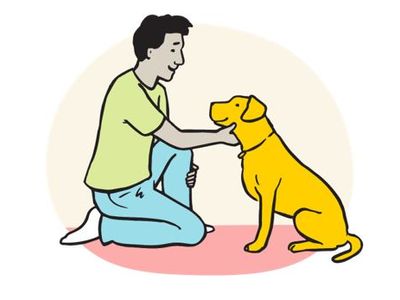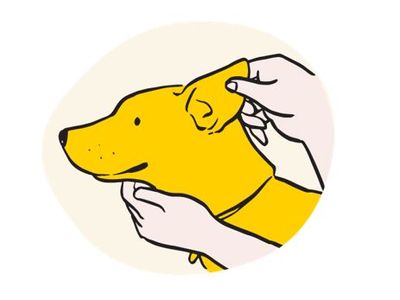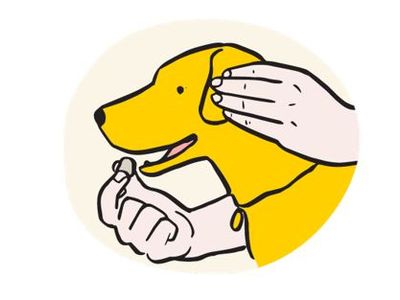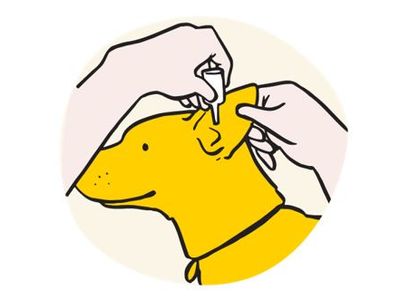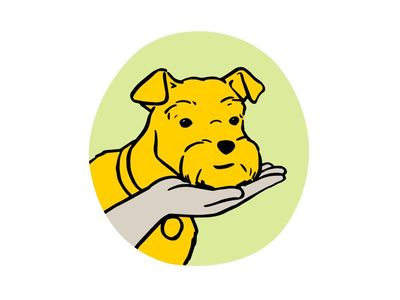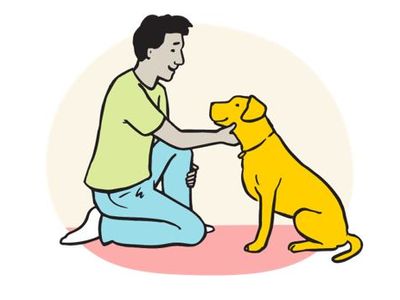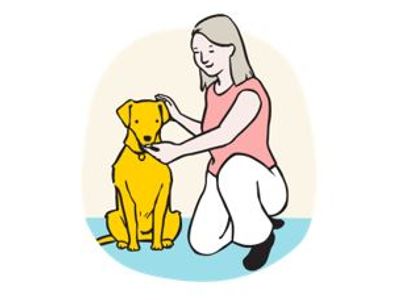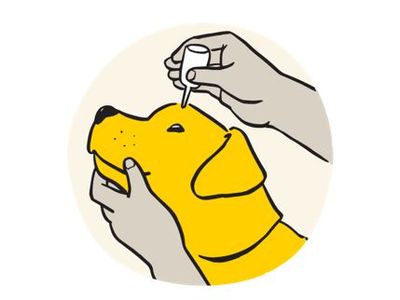How to give your dog ear or eye drops
There may be times when you'll need to give your dog ear or eye drops at home. Here are our top tips.
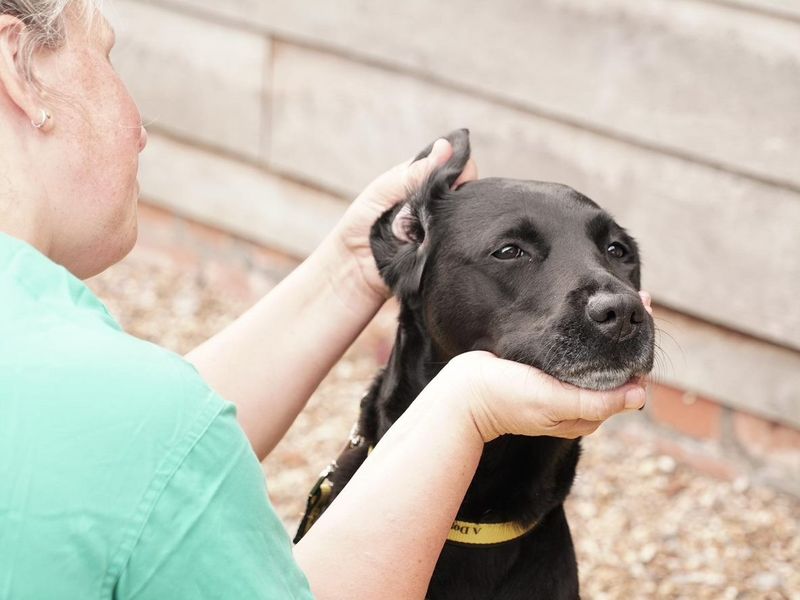
Your vet may prescribe ear or eye drops for your dog to treat various infections or irritations. Some dogs are particularly prone to having sore ears or eyes and may need treatment regularly.
If you’re concerned about your dog’s ears or eyes, speak to your vet. Never use human ear or eye drops on your dog, unless prescribed by a vet.
Preparing your dog for ear or eye drops
Lots of dogs will need ear and eye drops at some time in their life. So, it’s a good idea to get your dog comfortable with having their head, ears and eye area handled before they need any drops.
This way, it won’t be a scary experience for them and will be easier for you. Take a look at our guide on handling your dog, to teach them that having their head held and their ears or eye area handled is nothing to worry about. If you need to start giving your dog ear or eye drops urgently, then follow these steps. Once your dog is better, follow our guide to get your dog used to handling.
Positive practice will make you both better prepared if they need similar treatment again.
Before you start
Read all the instructions before giving any medicine to your dog. If you’re not sure about how much to give, or how to prepare it, check with your vet. Ask your vet whether you need to wear gloves when giving your dog their medicine. You may need to protect your skin when handling certain medications, like steroids.
Practise first without your dog. Mime the actions you need to do to give your dog drops a few times. You could use a cuddly toy. This will help the actions become consistent and natural. Practise squeezing a few drops out of the ear or eye drop bottle, so you know how much pressure to use and how quickly the drops come out.
Prepare a handful of extra-tasty treats. You’ll need these to reward your dog and help make this a positive experience.
Tips for keeping your dog relaxed
- Choose a time when your dog is happy and calm. Keep sessions short. You don’t need to do all the steps during each session. The steps described here are intended to guide you, but some dogs might need to go much slower.
- It can be tempting to rush ahead, especially if your dog appears to be doing well. But going slowly and taking things gently means that you and your dog can feel confident all the way. Think of each short session as laying foundations for the next.
- Watch your dog as you go. Stop right away if you see any signs that they are becoming uncomfortable, worried, or frustrated. An understanding of a dog’s body language is essential in helping you and your dog work together.
- If at any point you or your dog is struggling, go back to a stage at which they were comfortable and practise for a little bit longer before moving on again. Repeat each stage several times so your dog becomes familiar and comfortable with what you’re doing. Keep giving them reassurance and encouragement.
- If your dog is showing signs of being very uncomfortable – for example, growling, squealing, snapping, biting or running away – talk to your vet. They can re-examine your dog and advise on different options, including alternative treatments or seeking professional behavioural support.
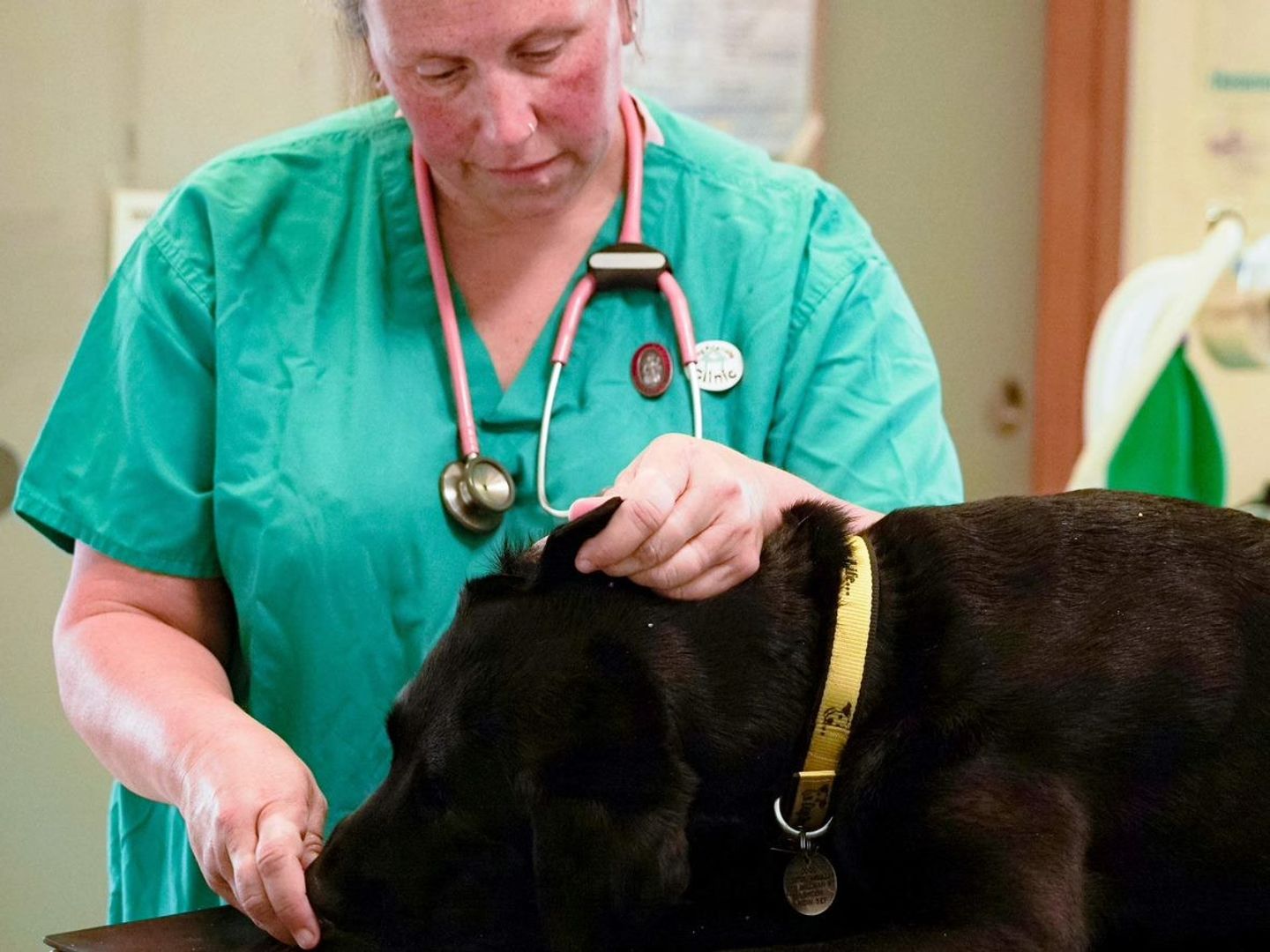
Giving your dog ear drops
Before you start, bear in mind that if your dog needs medicated ear drops it’s likely that their ears are inflamed and sore, so they probably won’t enjoy having their ears handled and drops put in. Try to be as gentle as possible. Before you get started, grab some of your dog's favourite tasty treats.
Start to touch their head
Place yourself beside your dog. Stroke the top of their head with one hand and give them a treat straight away from your other hand.
Repeat this several times, gradually holding your hand still on top of their head before giving them a treat. This teaches your dog …
Move towards their ear
Slide your hand down from the top of your dog’s head to rest on top of the ear that is closest to you. Give them a treat straight away from your other hand then throw another treat out for them to chase and enjoy.
Hopefully, they’ll choose to return and continue …
Lift your dog's ear
Start to slip your thumb underneath the flap of your dog’s ear and gently raise it up, holding it still for just a moment or two, then give them a treat from your other hand before tossing another treat out for them to chase and enjoy.
Add your cue
Being able to predict what will happen to them can help dogs feel confident, so add in a word or phrase to let your dog know what is about to happen.
Say “ear drops” just before you place your hand on your dog’s ear, then lift up their ear flap and give them their …
Increase the duration
Repeat the first four steps, but hold your dog’s ear flap for a few moments longer each time before giving them a treat from your other hand, then throw another out for them to chase and enjoy.
Gradually increasing this time helps your dog accept their ear being …
Introduce the dropper
As you hold your dog’s ear flap up, use your other hand to introduce the dropper bottle. Place the nozzle gently towards the opening of their ear canal.
Keep it there for just a very brief moment to begin with. Tell your dog how good they are. Remove the bottle …
Massage the ear
You will need to help the drops reach the inner part of your dog’s ear. This time, release your dog’s ear flap and practise gently massaging around the bottom of their ear, where the canal starts.
Massage with one hand while giving treats from your other hand. Then …
Now add drops!
Now you’re both prepared for you to give your dog the ear drops for real! With the nozzle in place at the ear canal, squeeze the bottle gently, releasing drops into your dog’s ear as prescribed by your vet, remembering to massage around the bottom of their ear.
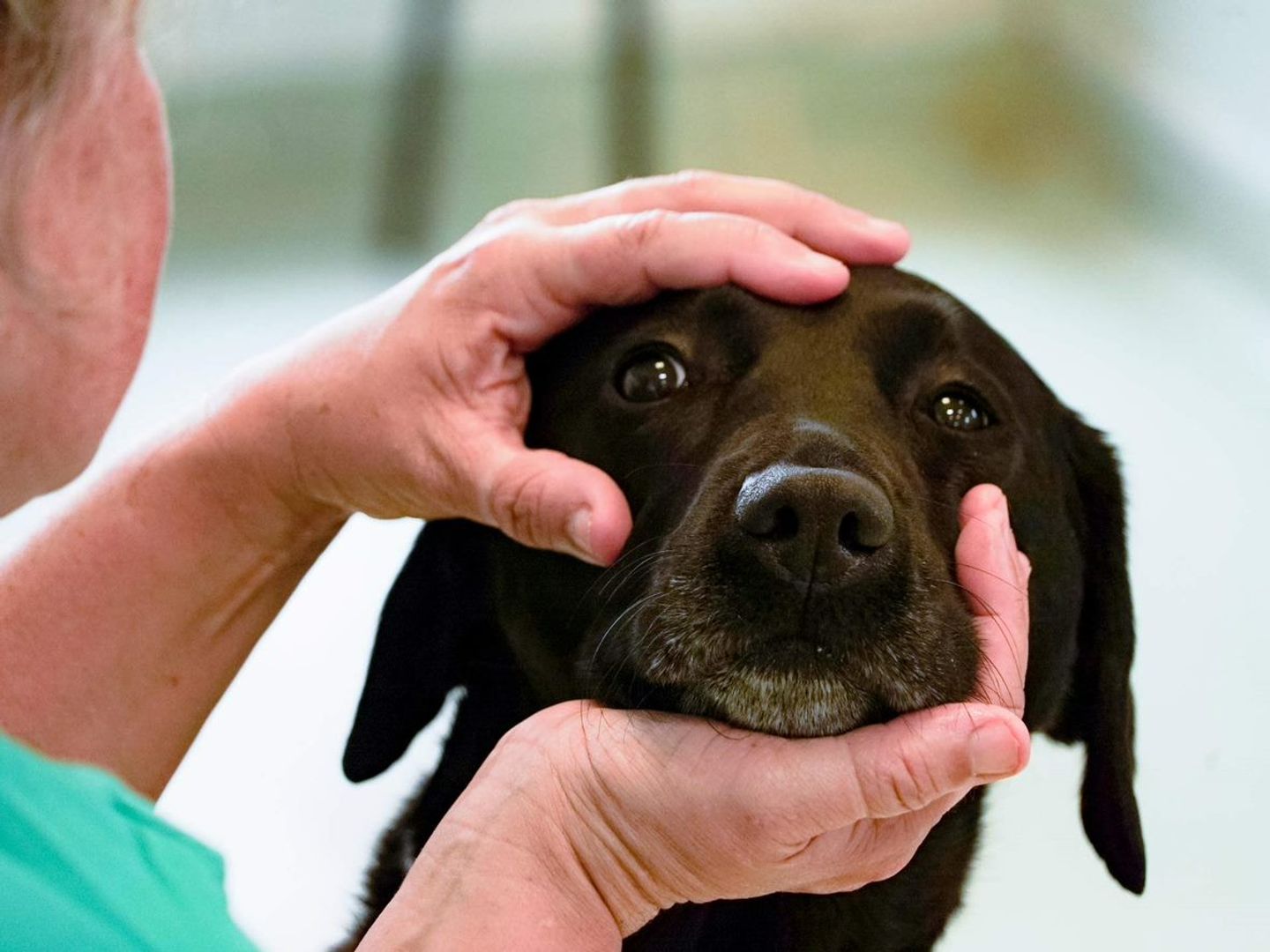
Giving your dog eye drops
Before you start, imagine how it might feel to be held still while a hand with a plastic bottle in it comes directly towards your eyes, especially if they’re sore! Try to be as gentle as possible. Make sure you have plenty of your dog's favourite tasty treats to hand.
Stroke their chin
With your dog facing you, stroke the underside of their chin with one hand, then give them a treat straight away from your other hand. This teaches them having their chin touched means a delicious treat is coming right away.
Hold their chin
Gradually hold your hand still beneath your dog’s chin before giving them a treat. Supporting your dog’s head like this helps them to remain still while the medication is given.
Give them a treat straight away from your other hand and then throw another out for …
Stroke their face
With one hand supporting your dog’s chin, bring your other hand up over their top jaw to gently stroke their face, brushing over their eyes, then give them a treat. Toss another treat out for them to chase and enjoy.
Touch both their chin and head
Place one hand beneath your dog’s chin and your other hand on their forehead. Keep still for a moment or two, to begin with, and then gradually for a bit longer – always following this with treats as usual.
Add your cue
Being able to predict what will happen to them can help dogs feel confident, so you can start to add in a word or phrase to let your dog know what is about to happen.
Say “eye drops” just before you place your hands into position, then give the treats as usual. …
Practise holding the dropper bottle
Practise holding the dropper bottle downwards in your hand, as you’ll need to be comfortable holding it and squeezing it at the same time, before doing this for real.
With one hand beneath your dog’s chin and your other hand resting on your dog’s brow, hold the …
Build up the duration
Gradually build up the time you remain in this position, then move the nozzle so it points towards one eye before giving your dog their treats.
Repeat this, moving the bottle towards the other eye. Then practise moving the bottle from one eye to the other, before …
Close your dog's eyelids
Hold the nozzle over one eye for a few moments longer, then use your fingers to gently and briefly close your dog’s eyelids. This helps the drops coat the eye’s surface. Give your dog their treats as usual.
Do the same with the other eye, always giving praise and …
Now add drops!
Now you’re both prepared for you to give your dog the eye drops for real. With the nozzle in place just above the eye, squeeze the bottle gently to release drops into your dog’s eye as prescribed by your vet.
Once you've dropped in the liquid, gently bring your …
